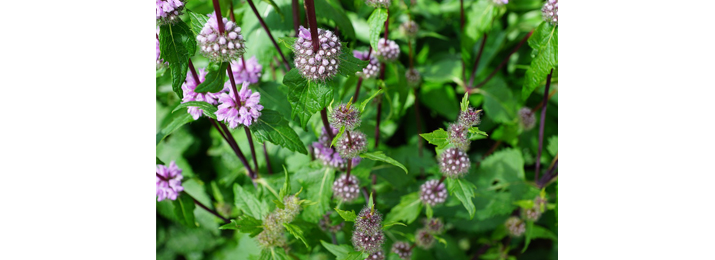We firmly believe in the benefits of plants and the advantageous effects they can have on daily life. In our latest blog on the range of herbal and medicinal plants from across the world, we take a look at some of our favourite varieties that can even be grown in your garden at home!
Mint
Also known as the herb of hospitality in Greek mythology, mint has been used for many years in Europe as a room deodoriser. It was strewn across floors to cover the smell of the hard-packed soil, and was stepped on to release the scent. Today, however, mint is more commonly used for aromatherapy through the use of essential oils. The oils are also used extensively as breath fresheners, drinks, toothpaste, chewing gum and sweets.
There are a number of varieties, including spearmint, peppermint, chocolate peppermint, pineapple mint, apple mint, ginger mint. The warm, fresh, sweet flavour of mint makes it an ideal flavouring for teas, beverages, jellies, syrups, candies and ice creams. It is also a popular addition to lamb dishes across many cuisines.
Mint was originally used as a medicinal herb to treat stomach ache and chest pains, but there has been preliminary research for the potential use in treating IBS (irritable bowel syndrome).

Red Clover Blossoms
Red clover blossoms are native to Europe, Western Asia and northwest Africa, but are planted and naturalised in a number of other regions. The plant is commonly used to make sweet herbal teas, while both the green leaves and blossoms can be eaten in salads.
In Indian traditional medicine, red clover is used as an antispasmodic, expectorant, sedative and anti-inflammatory agent. Alternative uses in medicine include the treatment of coughs and disorders of the lymphatic system. There had been suggestions that a variety of cancers could be treated with the plant, though the American Cancer Society has said that “available clinical evidence does not show that red clover is effective in treating or preventing cancer, menopausal symptoms, or any other medical conditions.”

Rosemary
This woody, perennial herb has fragrant, ever-green, needle-like leaves and white, pink, purple or blue flowers. It is originally native to the Mediterranean region, but is used across the world. It’s fresh or dried leaves can be roasted with meats or vegetables to enhance the flavour and release a mustard-like aroma. The leaves can also be used to make herbal teas.
Rosemary oil has been added to perfumes and scents for a number of years, but it is also burnt as incense, used in shampoos and even cleaning products.

Sage
Sage is a member of the Lamiaceae family and is native to the Mediterranean region. The perennial, evergreen shrub has a long history of medicinal and culinary use, but is commonly used today as an ornamental garden plant.
Britain has listed sage as one of the essential herbs, along with parsley, rosemary and thyme. It has a savoury, slightly peppery flavour and is used most notably in Italian, Balkan and Middle Eastern cuisines. In British and American cooking, sage is traditionally used in the ‘Sunday roast’. As well as an accompaniment to roast turkey or chicken, sage is also used to create sage and onion stuffing, and the common Lincolnshire sausages.
The essential oils from sage have been suggested to boost short-term memory performance through the use as a dietary supplement.


